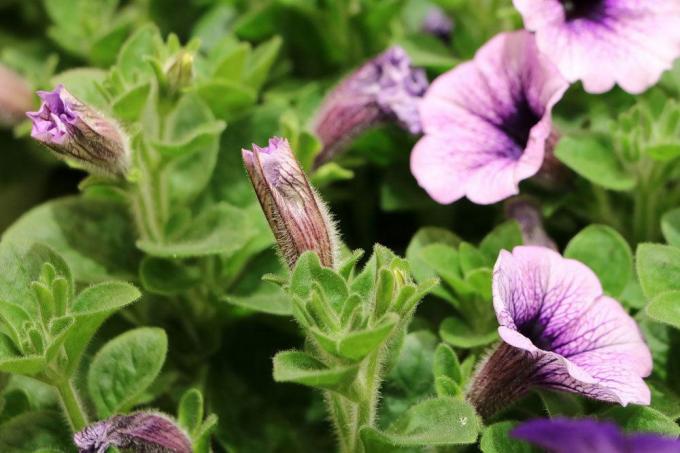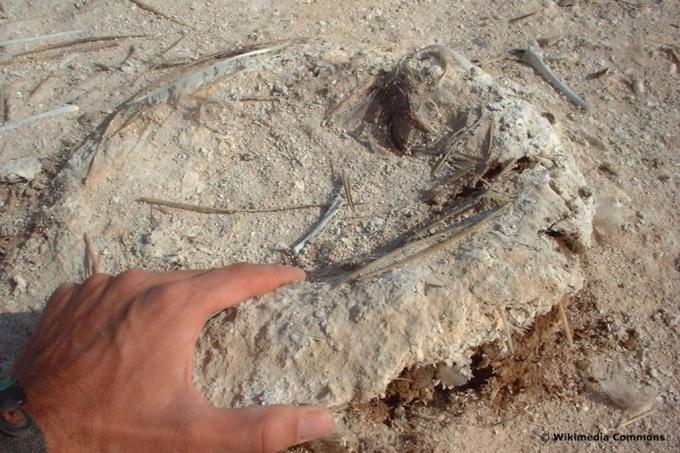
table of contents
- Possible causes
- Chlorosis
- PH value
- Substrate
- to water
- Repot
- Deficiencies
- frequently asked Questions
When the leaves of Petunias yellow, the so-called chlorosis is most often responsible. However, with the right measures, the problem can be prevented and the plant saved.
In a nutshell
- Chlorosis is one of the most common causes of yellow petunia leaves
- prevention through good care is possible
- other deficiencies can also be responsible
- Plants can usually be saved with timely intervention
Possible causes
If the petunia leaves turn yellow or fade, one of the most common possibilities is so-called chlorosis. However, other factors can also play a role. These include:

- wrong location
- insufficient incidence of light
- unsuitable care
- Failure to overwinter
Before the right measures can be taken to save the plant and prevent further damage, the culture conditions should therefore be checked and, if necessary, adjusted.
Chlorosis
In the Chlorosis it is an iron deficiency in the plant. This can also be the case if it is fertilized regularly. Too high a lime content in the substrate or in the irrigation water is responsible. With the resulting pH value, the petunia can only absorb certain nutrients in insufficient quantities or not at all.
Iron in particular is needed to form certain enzymes and hormones. These, in turn, are crucial for the petunias to breathe and for photosynthesis to take place in order to generate energy. You can recognize chlorosis by the following signs:
- yellow leaves but green veins
- young leaves are particularly affected
- Stunted growth
To prevent it or treat the affected plant appropriately, several factors must be considered.

PH value
Measuring the pH of the substrate is important in order to change the soil if necessary. Values between 5.5 and 6.5 are ideal for the petunia. This is the neutral to weakly acidic range.
If the soil is too acidic or too basic due to too much lime or other influences, the absorption of nutrients will be disturbed. In this case, the substrate must be changed and both the fertilization behavior and the watering must be adapted.
Tip: Corresponding tests can be carried out either with test strips from the pharmacy or specialist retailer, or a sample of the substrate can be given to specialist retailers for checking.
Substrate
The ideal substrate for petunias is:
- relaxed
- fresh
- rich in humus
- nutritious
- neutral to slightly acidic
- does not tend to compress
- has a low lime content
Since the petunia is a heavy eater, it needs large amounts of nutrients. These, in turn, can only be absorbed from the earth if it is a suitable substrate. Compost soil or potting soil are suitable.
to water
In addition to the substrate, watering or the water used for this also play a role crucial role in the care of the petunia and in the prevention of chlorosis or others Deficiencies. If the water used is very hard - i.e. has a high lime content - the lime is gradually deposited in the substrate and on the roots. The roots can only absorb the nutrients from the earth to a reduced extent or not at all and the plant is undersupplied. This is often the case when using tap water. Because especially in Germany this many places is very tough.
The following sources can be used as alternatives:

- collected rainwater
- Water from the aquarium or pond
- filtered tap water
- stale tap water
Since petunias need a lot of water, stale tap water is often the most practical solution. This is especially true if it is cultivated on the balcony and there is no possibility of using rainwater or pond water. Before watering, the tap water is left in a watering can or bucket for seven days. The lime collects at the bottom of the vessel. When watering, you therefore only use about two thirds of the water for the petunias. The rest can be used for plants that have a high tolerance to lime.
Note: Petunia leaves can also turn yellow due to lack of water or waterlogging. You should therefore check the humidity of the substrate at least once a week.
Repot
Due to the high nutrient requirements and frequent watering, the substrate is used up quickly. The nutrients are absorbed by the plant on the one hand and washed out by the water on the other. A regular change of soil can therefore prevent the petunia leaves from turning yellow. An ideal time is the end of wintering, when you bring the plant back outside. The new shoot increases the nutrient requirement and this is covered directly by the fresh soil.
Deficiencies
Not only chlorosis and thus an iron deficiency, but also other deficiencies can be responsible for yellow petunia leaves. In order to keep the leaves and plants healthy as a whole, an adequate supply of nutrients is therefore necessary. Suitable means are:

- guano
- Flowering plant fertilizer
- from June iron fertilizer
- special petunia, geranium or surfing fertilizer
Tip: About four weeks after repotting, fertilizing can be done every week. Liquid fertilizer is particularly easy to dose and can be added directly to the irrigation water, making it very easy and practical to use.
frequently asked Questions
If the petunia is cultivated in a tub, there is less substrate available than in the field. The earth dries faster and nutrients are also only available to a limited extent. Diseases, pests and deficiencies therefore occur more frequently if care is not adjusted accordingly. The calcification of the substrate also takes place in a shorter time when using hard water in smaller planters.
An annual change of soil in the bucket culture is ideal. The old substrate should be completely rinsed from the roots in order to remove any deposits, germs or pests that may be present. A drainage layer is also important to avoid waterlogging.
Guano or liquid flowering plant fertilizer are usually sufficient if given weekly. If chlorosis is already beginning or is present, in addition to changing the substrate, the Using low-lime water and removing dead leaves, an iron fertilizer is also used come. This can also be given preventively from June to September, as the petunia has a high requirement for the mineral.



